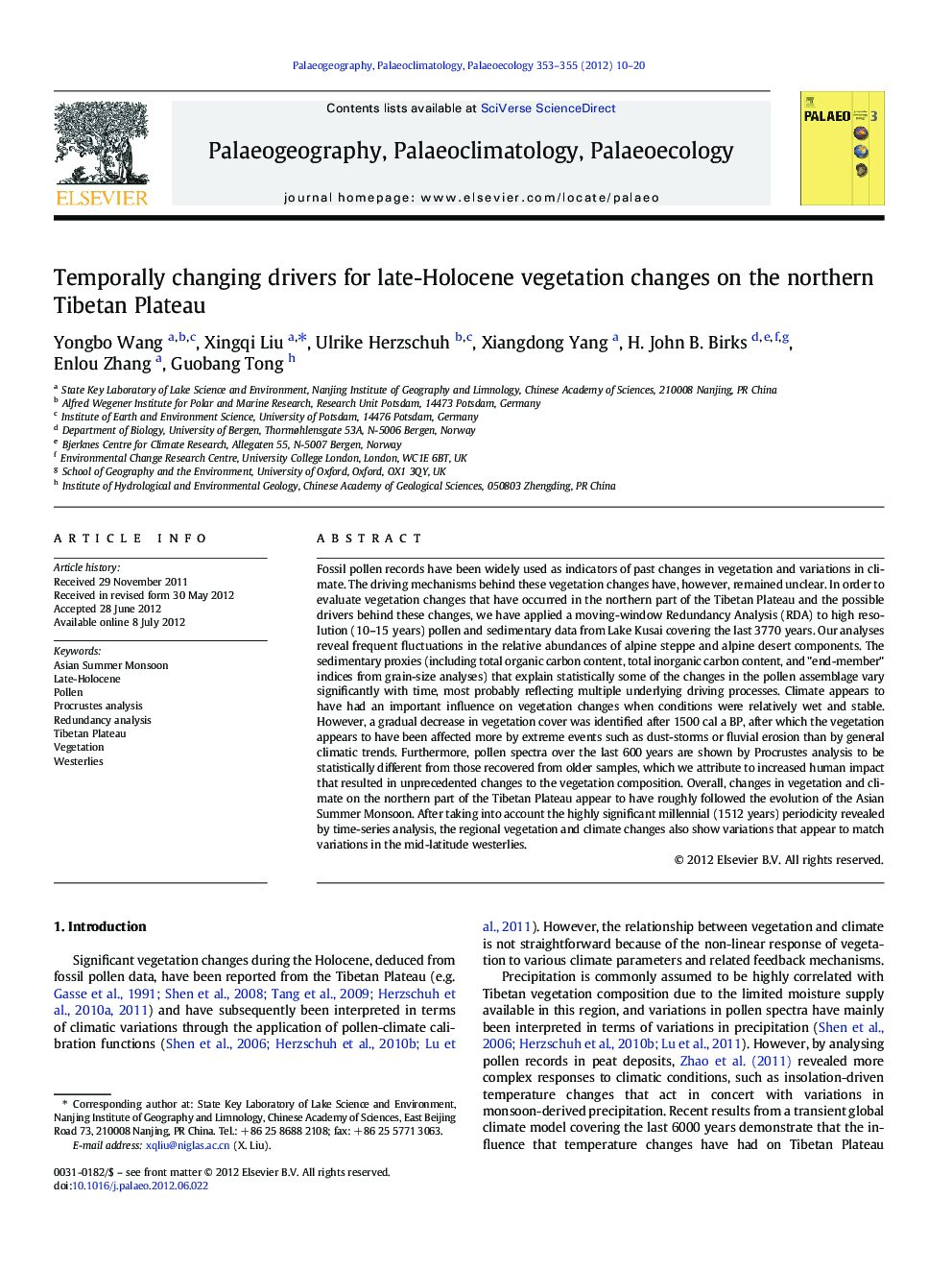| کد مقاله | کد نشریه | سال انتشار | مقاله انگلیسی | نسخه تمام متن |
|---|---|---|---|---|
| 4466788 | 1622224 | 2012 | 11 صفحه PDF | دانلود رایگان |

Fossil pollen records have been widely used as indicators of past changes in vegetation and variations in climate. The driving mechanisms behind these vegetation changes have, however, remained unclear. In order to evaluate vegetation changes that have occurred in the northern part of the Tibetan Plateau and the possible drivers behind these changes, we have applied a moving-window Redundancy Analysis (RDA) to high resolution (10–15 years) pollen and sedimentary data from Lake Kusai covering the last 3770 years. Our analyses reveal frequent fluctuations in the relative abundances of alpine steppe and alpine desert components. The sedimentary proxies (including total organic carbon content, total inorganic carbon content, and "end-member" indices from grain-size analyses) that explain statistically some of the changes in the pollen assemblage vary significantly with time, most probably reflecting multiple underlying driving processes. Climate appears to have had an important influence on vegetation changes when conditions were relatively wet and stable. However, a gradual decrease in vegetation cover was identified after 1500 cal a BP, after which the vegetation appears to have been affected more by extreme events such as dust-storms or fluvial erosion than by general climatic trends. Furthermore, pollen spectra over the last 600 years are shown by Procrustes analysis to be statistically different from those recovered from older samples, which we attribute to increased human impact that resulted in unprecedented changes to the vegetation composition. Overall, changes in vegetation and climate on the northern part of the Tibetan Plateau appear to have roughly followed the evolution of the Asian Summer Monsoon. After taking into account the highly significant millennial (1512 years) periodicity revealed by time-series analysis, the regional vegetation and climate changes also show variations that appear to match variations in the mid-latitude westerlies.
► Late Holocene climate and vegetation change on the northern TP were deduced.
► Temporal correlation between pollen and sedimentary proxies was evaluated.
► Results indicate that climate is not always the main driver for vegetation evolution.
► The human impacts on vegetation change did not start until 600 cal a BP.
► Holocene climate on northern TP was influenced by both summer monsoon and westerlies.
Journal: Palaeogeography, Palaeoclimatology, Palaeoecology - Volumes 353–355, 1 October 2012, Pages 10–20